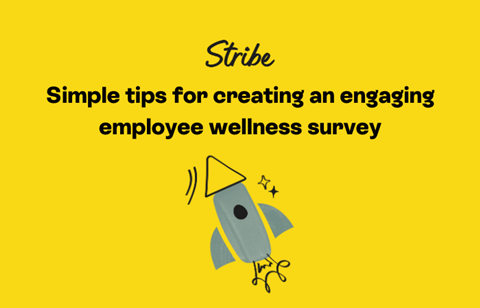
Simple tips for creating an engaging employee wellness survey
Addressing mental health and wellbeing in the workplace can be challenging and confronting. But with every difficult conversation, there and steps we can take to make change for the better.
Employee wellness surveys play an important role breaking down the stigma around mental health and opening discussions around staff wellbeing.
And while supporting employee wellbeing is an ongoing endeavour, employee wellness surveys are a great place to start. These surveys serve as a catalyst for meaningful conversations and encourage employees to begin sharing their wellbeing experiences, making them a vital stepping-stone in creating healthy and happy workplaces.
1. Keep it simple
You’ll likely lose engagement if your survey is complicated, lengthy, or riddled with jargon. Keep your questions clear and use straightforward language that everyone can easily understand. With wellbeing questions, you want tone of voice to be kind, approachable and considerate.
2. Use a variety of question types
Using a variety of question types in your employee wellness survey will make it more engaging and insightful. By including various types of questions, such as multiple-choice, scale-based, and open-ended questions, you provide different avenues for your employees to express their thoughts.
3. Prioritise anonymity
Prioritising anonymity in your employee wellness survey is crucial for ensuring honest and authentic responses. When employees know that their feedback is anonymous, they’re more likely to share their genuine thoughts, concerns, and suggestions without fear of judgement
4. Cover all pillars of wellbeing
Covering all the pillars of wellbeing in your employee wellness survey helps you gain a holistic understanding of overall health and happiness. Wellbeing is multi-faceted and encompasses physical, financial, emotional, and social aspects.
By addressing all the dimensions, you will uncover the specific areas where your employees might be thriving or struggling. For example, you could ask about work-life balance, stress management, opportunities for financial development, interpersonal relationships, and access to resources for maintaining physical health.
5. Include positive and constructive questions
Positive questions help you identify what’s working well and what employees appreciate, while constructive questions highlight areas for improvement and growth. Balance positive questions like “What wellness initiatives do you find most helpful?” with constructive ones like “What changes could enhance your overall work experience?”
6. Allow for personal insights
Incorporate open-ended questions that give employees a chance to share personal insights and deeper thoughts. Example: “Is there a specific activity or support you’d love to see added to our wellness programs?”
7. Offer optional comments
Provide space for additional comments at the end of the survey. This allows employees to express anything not covered by the questions.
8. Express gratitude
Don’t forget to thank your team for participating and sharing their valuable thoughts. Conclude the survey with a heartfelt thank you message and show appreciation for their time and input. Not only will the gratitude be appreciated, but they will also be more likely to share their feelings again in future.
Remember, the key to a successful employee wellness survey is making your colleagues feel heard and valued. With these tips, you’re on your way to creating a survey that sparks meaningful insights and positive changes.
When people are heard, teams are happy!
Stribe makes it easier for business leaders and HR teams to support the engagement and wellbeing of their employees. To learn more about Stribe and how our employee engagement platform can help your team be the best they can be – get in touch today.












